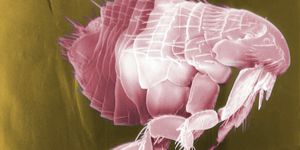Your Annual Reminder: Don't Wash Your Turkey!
Washing any raw poultry before cooking makes sense, right? Wrong! Washing raw poultry—including a massive Thanksgiving turkey—will likely do more harm than good!
The idea that washing raw poultry is safe and removes harmful bacteria originated decades ago. Some attribute the behavior to infamous chef Julia Child. To be fair, back then, we did not know as much about the spread of bacteria as we do now. This is why mom or grandma might put up a fight. Show them this video below from Homegrown by North Carolina State University.
In a statement to the Associated Press (AP), USDA food safety official Mindy Brashers stated that “it’s possible that two common causes of food poisoning—salmonella and campylobacter—are on the turkey.” Additionally, the USDA website says that “it’s virtually impossible to wash bacteria off the bird.” Attempting to do so will result in splashing juices that contain bacteria around your kitchen sink and surfaces, utensils, and even other foods. The USDA website states that cooking the turkey to a temperature of at least 165°F is the only way to kill bacteria present on the bird. You’ll need to have a reliable cooking thermometer on hand.
According to the AP, the USDA funded a study to prove the dangers of washing raw poultry. The AP article states by using chicken contaminated with a harmless strain of E. coli (and in test kitchens, not real restaurants), researchers discovered that 25% of cooks that washed the chicken spread germs to lettuce in the same kitchen.
Another critical step of preparing a Thanksgiving feast is washing your hands often, especially before and after handling the turkey. Handwashing prevents further cross-contamination and the spread of harmful bacteria. The USDA recommends using warm water and soap to wash hands for at least 20-seconds. Additionally, once your turkey is in the oven, you’ll want to clean and sanitize any surfaces it may have encountered. Hot water and soap should do the trick. To go the extra mile for sanitization, the USDA recommends creating a solution using one tablespoon of liquid chlorine bleach per one-gallon water. If you have a store-bought solution, make sure to follow the instructions!








